FNB Chronicles
A tour through historic Robbins
By REBA TATE
Contributing Columnist
Come with me to the south end of Robbins — commonly known as "The Brickyard" because it was the site of the Southern Clay Manufacturing Company, the manufacturer of several varieties of brick and tile.
Turn left just below Bradley’s Gulf Station and follow the road that was lined on the left side with "company houses" and the power plant. This road forms a large half circle and intersects with the Brimstone Road. Part of it is paved with bricks.
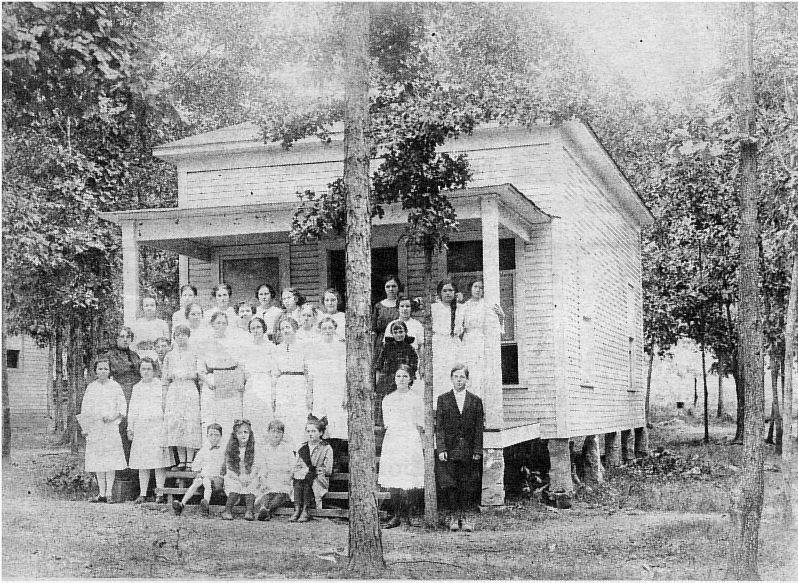 |
| THE MUSIC ROOM at an early Robbins School was nestled in a grove of oak trees. Among those pictured were LENA SMITHERS, front row, third from left; HORACE HUGHETT, first row, last on right); ESTELLE NEWPORT, third row, in dark dress on left); JOHN NEWPORT, third row at left; JANE THOMPSON, third row, fifth from left; HETTIE ROSS, third row, sixth from left; ROWENA WALKER and DELLA SHAW, back row, first and second from left; ETHEL WALKER, fourth from left; and BEULAH JUSTICE, seventh from left. Photo and identification of those pictured were provided by REBA TATE. |
The power house contained the huge machinery that generated electricity. It was operated by two five cylinder, 500 horsepower engines. The crankshaft was 26 feet long and the oil pan, which was made into the floor, held many barrels of oil — a barrel being 55 gallons. The cooling system was a 40 x 40 foot pool of water at the back of the power house. The brass rails on the catwalks and surrounding the machinery were polished to the nth degree. Clarence Ross was maintenance man on the day shift with JEFF SMITHERS (ELVA HUGHETT’s father) on evening and CLAUDE ELLIS on third shift. When the machinery was sold, one of the engines was bought by the State of Texas for their penitentiary.
The railroad from the main line of the Southern was a straight line from the present crossing to the office (approximately 1/4 mile). The ground level on the right side of the track was box car door high so the bricks from the kilns could be loaded easier, as they were loaded from wheelbarrows. The area of land on the right side was covered by rows of kilns where the bricks were baked. They looked like rows of brick igloos. The clay for making the bricks was taken from nearby hills by a steam shovel mounted on a narrow gauge railroad car. This railroad was called a "dinkey". My daddy, JOHN L. ROSS, operated this shovel.
Next to the office was the commissary – a two story brick structure where employees and the general public traded. One could buy nearly anything needed, from shoelaces to men’s Stetson hats, cloth and groceries. The delivery wagon was pulled by a team of horses.
There was a boarding house nearby, operated by Mrs. NANNY BLACK. The company officials always stayed there when they came up from Birmingham on business.
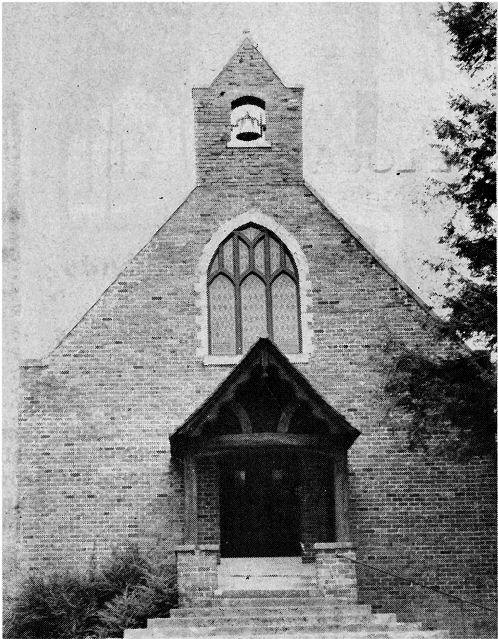 |
| ROBBINS LANDMARK — Barton Chapel Congregational Church, established in Robbins in 1885, is still very much a part of the community well over 100 years later. |
The Brickyard Ponds were made to provide water used in the manufacturing process. At one time one was the favorite swimming spot of the community. It was also used for baptismal services.
The late GROVER PEMBERTON bought all the brickyard property when it was sold. He gave me the brick we used as a floor for a stove when we built our last house. They came from the porch floor of the commissary and we dug them out from under three or four inches of dirt, cinders and bushes. These are the beautifully glazed fire brick.
The first Congregational Church was known as the Pilgrim Church. It was built in 1885 on property just north of the present Baptist Parsonage, which was the former home of IRA and LILLY STONECIPHER. The first school in Robbins was held in the basement. This building served both the Congregational and the Baptist until the Baptist Church was built in 1906. When a revival was being held in the community, the morning services were held in the Congregational Church and the evening services were held in the Baptist. There has always been a good spirit of fellowship between the two churches. Even today a joint Thanksgiving dinner and service is held at the Congregational and the Easter service and dinner at the Baptist.
The first pastor of the Congregational Church was WILLIAM E. BARTON. He was a student at Berea College in Kentucky when he made a visit to Robbins. He liked the place and after graduating he came here as a pastor and circuit riding preacher — serving the churches at Glenmary, Deer Lodge and Lancing. Mr. BARTON only stayed in Robbins two years. He realized the need to further his education, so he moved to Ohio and entered a seminary. After his graduation he became pastor of the First Congregation Church in Oak Park, Illinois, where he remained for 25 years. He left there to go to Nashville, Tennessee where he was a lecturer at Vanderbilt and pastor of a nearby Congregational Church.
His son, BRUCE BARTON, was born in Robbins on August 5, 1886 in a white frame house on the hill where LENA SHEPPARD now lives. He was one of the founders of BATTON, BARTON, DURSTIN & OSBORNE a very famous advertising agency in New York. He was a pioneer in that field. He was also editor of several magazines and wrote "The Man Nobody Knows" and "The Book Nobody Knows."
The present Barton Chapel was built in 1926 on land donated by JASPER HUGHETT and is built of bricks donated by The Southern Clay Manufacturing Company. The walls are three bricks thick. The laying of the cornerstone was attended by the first pastor, WILLIAM E. BARTON, a very tall, distinguished looking man with white hair, and a white goatee. He wore a black Chesterfield coat (unusual attire for this community).
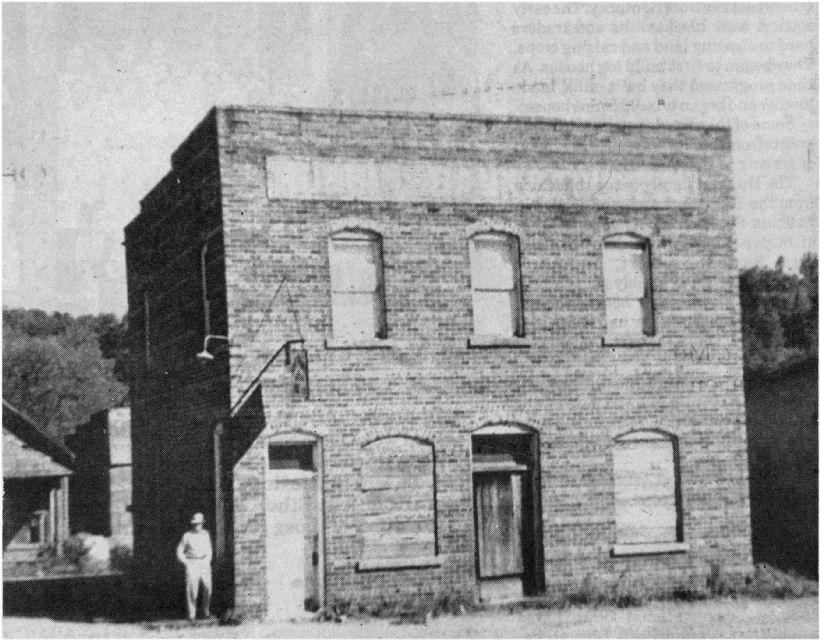 |
| THIS IS the building in which the Robbins Bank & Trust Company conducted business for several years in Robbins, before failing during the Great Depression of the late 1930’s. The building, and much of the formerly bustling little community in south Scott County, is but a memory to residents of the area. |
When the church in Oak Park, Illinois burned, the only furniture saved was the two alter chairs and the podium. These are exceptionally beautiful pieces of furniture and they were given to Barton Chapel in memory of Dr. BARTON. The ladies of The Evening Division of the Oak Park Church gave the pews in memory of Mrs. BARTON. A Jewish friend of the Bartons, who lived in St. Louis, Mo. donated the light fixtures. The rich wood and the mellow patina of the brick walls create a soothing, inspiring mood. The building is now on the National Historic Register.
Barton Chapel soon became the social center of Robbins. A youth club was formed and we all had access to the wonderful library located in the basement. The Rev. GEORGE L. DAY was pastor for many years. He and his very active wife influenced many young lives in this and surrounding area.
|
|
| THESE ARE BUT TWO of the school buildings which were erected in Robbins through the years. At left is the old Robbins Elementary School building, and below is the Robbins High School of yesteryear. The white frame structure you see in the background of the brick elementary school is believed to be a portion of the building pictured below. The building at right, incidentally, is one of the earliest school buildings at Robbins. |
|
|
Next was the Jasper Hughett General Store. At this large country store one could buy piece goods (material on bolts) shoes, hats, groceries, hoop cheese (cut to order) and also a chew of tobacco (cut to order) and live chickens from a coop located in the side room. Caskets were also sold. After trading a certain amount of dollars, one could get dishes as a premium. I found some in a yard sale, and hung a saucer on my kitchen wall with the back side showing the gold letters "Jasper Hughett Cash Store" because this meant more to me than the picture on the front. Behind, and to the left of the store, was a feed house stocked with hay, grain and feeds for sale.
A road separated Hughett’s Store and the Robbins Bank & Trust Company. C. C. (Cal to us) NEWPORT (father of ARCHIE and CLAYTON) and Little MITT ROBBINS worked in the bank then transferred to Oneida Bank & Trust Company when the bank in Robbins closed in 1937. The second story was used by the Masons and the Eastern Star.
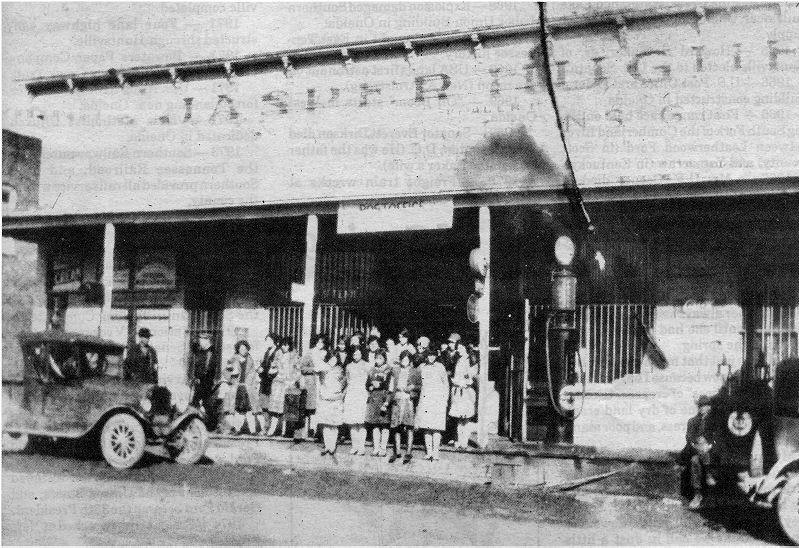 |
| A group of young ladies pose on the porch of Jasper Hughett’s store in Robbins |
Behind, and to the left of the bank was a small building that housed BEN SMITH’s Barber Shop. A Dr. TODD had an office in the back room. A road separated the Bank and JESSIE REED’s Store. This was a large two story building with around corner and a porch around two sides. It was similar to any country general store, only on a smaller scale. It contained their living quarters on the ground floor and rental rooms, by the week or month, on the second floor, which were reached by stairs from the lower porch. The second floor also had a porch around two sides. At one time it housed the Post Office, as did HUGHETT’s Store.
About four feet from REED’s was LAWRENCE KLINE’s Store and his living quarters. He had a flourishing business as his was a newer store, with his younger ideas. The other stores had begun to dwindle. He also operated a coal tipple by the railroad and a Tennessee Walking Horse farm and raised Black Angus cattle on a farm behind the store.
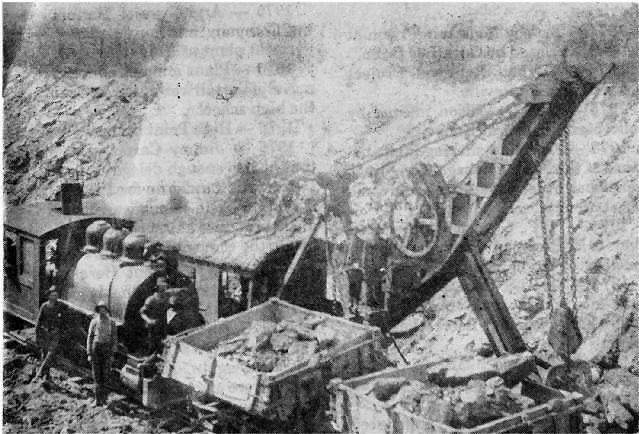 |
| A HUGE STEAM SHOVEL excavates the raw material used in brickmaking at the once productive Robbins Brickyard in Robbins. |
|
|
| OPAL WELCH is photographed against what has become known as the "Advertising Wall" at the old Robbins Brickyard in Robbins. The wall was built for sales and display purposes, as the company manufactured several different styles and types of brick for building and road paving purposes. Portions of the wall are still standing. |
In 1958 two separate fires completely destroyed the business section of town. The first one burned Reed’s Store, Kline’s Store, Phillips’ Hotel and the Foust Building. The second one took Hughett’s Store and feed house, Ben Smith’s Barber Shop and the Bank. LAWRENCE KLINE then built a much larger building to house his store, offices and the Post Office.
Did you ride into town on #16 or #15? These were the local passenger trains that stopped about 9:30 a.m. (northbound), and 3:00 a.m. (southbound). If you need a place to stay, come over to the Phillips Hotel next to Kline’s Store. It was operated by Mrs. SARAH PHILLIPS, a large gray haired lady who liked to wear a lot of jewelry, especially pearls. Her son Dr. PITNEY PHILLIPS, had an office in one room. He always had a cigar in his mouth or hand. He was very jovial and had a good medical practice. I remember a black leather fainting couch in the lobby of the hotel. Dr. PITNEY’s brother was Dr. TOM PHILLIPS of Oneida. He had an office just up the street from Webb’s Hardware. His large home sat on the hill where the Scott County Hospital now stands.
A very small yard separated the hotel from a long, narrow building that was the home of Dr. FOUST.
Behind the Kline house is the oldest cemetery in town. To the left of the cemetery was the Star Bottling Company. Mrs. NORA WEST told me they bottled mostly fruit-flavored drinks. She did not name any cola flavor. I own three of the bottles from this plant, two are pale green, the other is brown, and they are highly prized by our family.
Up the hill from the bottling plant stood the Printing Press Building. This place is now the site of Kline’s silo and barn. The bottling plant and the printing press operated long before my time.
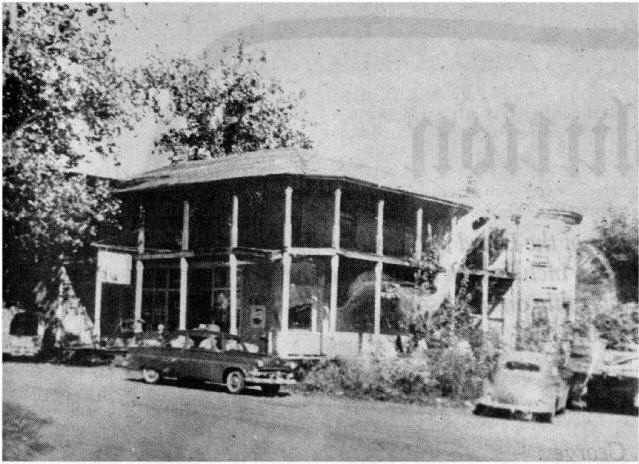 |
| J. V. REED’S STORE was a busy and popular place in Robbins of yesteryear. In addition to being a country store, the building housed the family’s living quarters, as well as rental rooms on the second floor of the store building. |
Last and least was the bakery. A very small brick building on the property of the late ETHEL WALKER HOOD. Various colors of single carnations grew by the south side of the bakery which was operated by Mrs. PYCKE. She was a large bustling woman who wore several petticoats. One day during a conversation with some women who were discussing ironing, she said: "I press the edges of my petticoats with the iron, and press the rest when I sit down." I knew then that she was a woman after my own heart, for I detest ironing, and my mother said everything had to be ironed. These irons were heated on the cook stove in a hot kitchen.
Some of the people of Robbins who have influenced the growth of Oneida are:
JOHN LEE WEST — County School Superintendent, lawyer and Mayor;
C. C. NEWPORT — President and member of the Board of Directors of First Trust & Savings Bank(1923- 1953);
ARCHIE NEWPORT — President and member of the Board of Directors of First Trust & Savings Bank(1953-1968);
W. T. (Bill) PHILLIPS — Merchant;
THOMAS PHILLIPS — Lawyer, Scott County Attorney, and newly-named (Feb. 14, 1991) U.S. Magistrate Judge for East Tennessee;
PAUL PHILLIPS — Lawyer, and youngest District Attorney General of Tennessee;
STEVE PHILLIPS — Merchant;
GARY PHILLIPS — Doctor;
M. J. ROBBINS, Jr. — Banker;
SHEILA ROBBINS — Publisher of the Scott County News;
TED R. WALKER — Insurance Agent; DAN B. WALKER — Texaco Distributor;
FRED & Dorothy Ellis (Mrs. LEW MOORE) — opened the store that was the forerunner of Danny’s Drugs;
PRESTON SHOEMAKER & Son — Merchants, car and Exxon distributors;
CALVERT ELLIS — Merchant;
GEORGE L. KLINE — Doctor;
School Teachers — ORPHA ROBBINS, MATTIE WALKER, MACEL REAGAN, JOYCE BOWLING and PATRICIA REED.
This list goes on and on, with bank personnel, factory workers, hospital employees, and sales persons coming in each day.
Robbins Bank & Trust Company, which was established on January 14, 1907 and remained in business until April 14, 1937, had the following stockholders in 1924:
E. G. FOSTER, JASPER HUGHETT, Mrs. MARY HUGHETT, ETHEL HUGHETT, ERNEST HUGHETT, HORACE HUGHETT, MILLIE JANE JEFFERS, MARSHAL LASHLEY, W. H. PERKINS, J. F. HARGROVE, Mrs. BESS HARGROVE, GEORGE T. WEBB, HOWARD H. BAKER, S. J. NORRIS, Mrs. S. J. NORRIS, CAL C. NEWPORT, W. MILLARD TODD, Mrs. CASSIE ROSS, CLAUDE E. STOREY, Mrs. AUDREY COX, M. J. ROBBINS, M. J. ROBBINS, Jr., W. C. BROWN, GEORGE W. BOLES, Mrs. DELPHIA ROBBINS, Mrs. DELLA SHAWL, A. B. ROHER (Harriman), J. R. T. REDMON, and the First Trust & Savings Bank of Oneida.
Southern Clay Manufacturing Company held controlling interest of the stock in the bank at first opening. It was chartered on August 27, 1907.
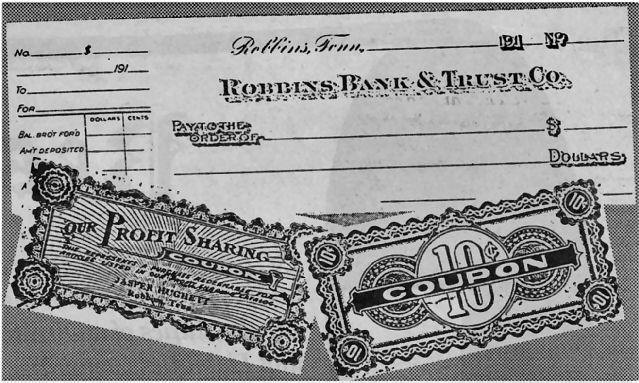 |
| MEMENTOES of a bygone era in Robbins, Tennessee |
FNB Chronicle, Vol. 2 No. 3 – Spring 1991
First National Bank
P.O. Box 4699
Oneida, TN 37841
(p1, 8-9, 11)
![]() This
page was created by
Timothy
N. West and is copyrighted by
him. All rights reserved.
This
page was created by
Timothy
N. West and is copyrighted by
him. All rights reserved.